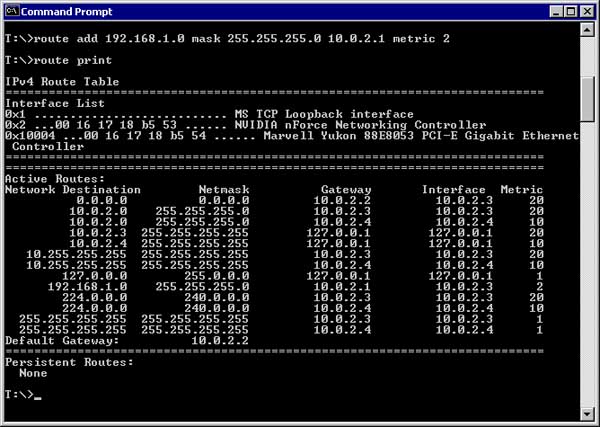Gateways, Routers and DNS

Effective use of VPN requires an understanding of networking fundamentals and this section explains those that my experiences lead me to conclude are the most key. The very mention of Routing and DNS can strike fear into the heart of many PC enthusiasts (our dear Administrator among them). There are those that understand these principles and those who don't and ne'er the twain shall meet. Here's an example of the typical rapport I've read time and time again on forums...
Questioner: I've established a VPN connection from my laptop at home to my office network but I can't browse anything.
Answerer: Have you checked your Routing Table?
Questioner: I'm new to this and I'm not sure I have a Routing Table.
Answerer: Ha! You're pathetic. You don't deserve to have a PC.
Perhaps I've exaggerated a little but you get the drift and hopefully this article will help you understand some of these fundamentals.
Unfortunately, our hardware suppliers (bless them) have further confused this topic by drifting away from established definitions, so here are a few things you need to know:
Gateway: A path between two separate networks, such as your home network and the Internet.
Route: A path between two subnets, that is, two separate parts of the same network; perhaps a main office and a branch office.
"But..." I hear you say, "my ISP has just installed a Router so I can connect to the Internet." No he hasn't, even if that's what he told you; he has installed a Gateway.
This situation is further exacerbated because these magical ‘Routing Tables' are actually used to establish ‘Routes' between networks!
In any case, I'll try to stick to the purist definitions whenever possible to avoid confusion. Also, for those of you who are already at the point of being scared off I will show you how to set up VPN connections that do not require you to meddle with Routing Tables. Having said that, Routing Tables are actually quite simple and merely tabulate instructions which explain how to get from somewhere on one network to somewhere on another network... and yes, you do have one.
Here's an example from my PC where I've created a Route between two networks and then displayed my Routing Table...

I did not manually enter all of these Routes, most are created automatically by the network itself and if you are clever about the way in which you set up your network you need never manually enter a Route; but more about that later.
One final point on Gateways; you may have noticed that associated with the IP address of a PC is another IP address called a ‘Default Gateway'. This is the path through which the PC will attempt to communicate if it is not given an explicit instruction to communicate somewhere else.
- 4828 reads

Recent comments
13 years 13 weeks ago
13 years 13 weeks ago
13 years 13 weeks ago
13 years 17 weeks ago
13 years 17 weeks ago
14 years 8 weeks ago
14 years 9 weeks ago
14 years 9 weeks ago
14 years 9 weeks ago
14 years 9 weeks ago
14 years 9 weeks ago
14 years 9 weeks ago
14 years 9 weeks ago
14 years 9 weeks ago
14 years 9 weeks ago
14 years 10 weeks ago
14 years 10 weeks ago
14 years 11 weeks ago
14 years 16 weeks ago
14 years 27 weeks ago